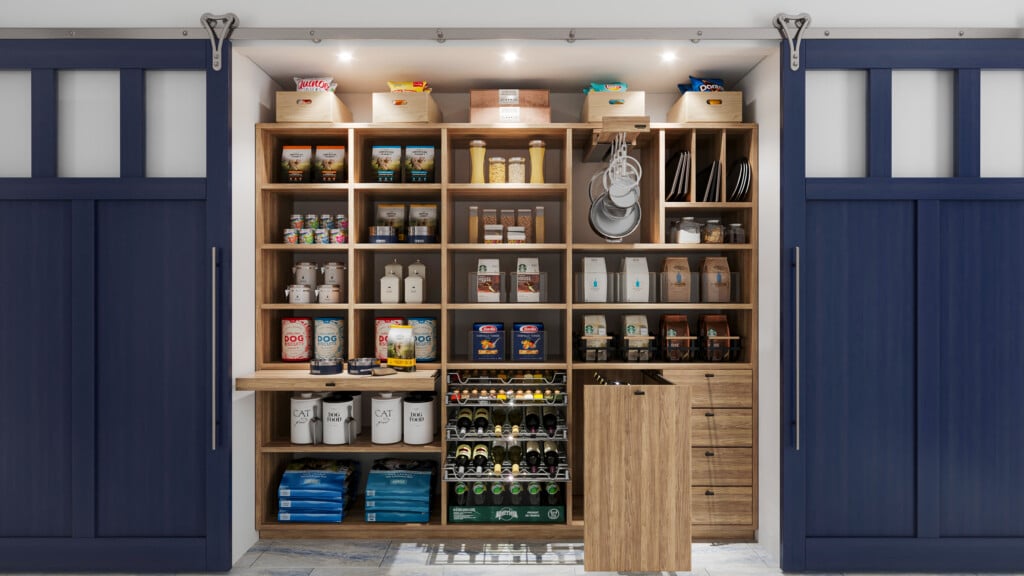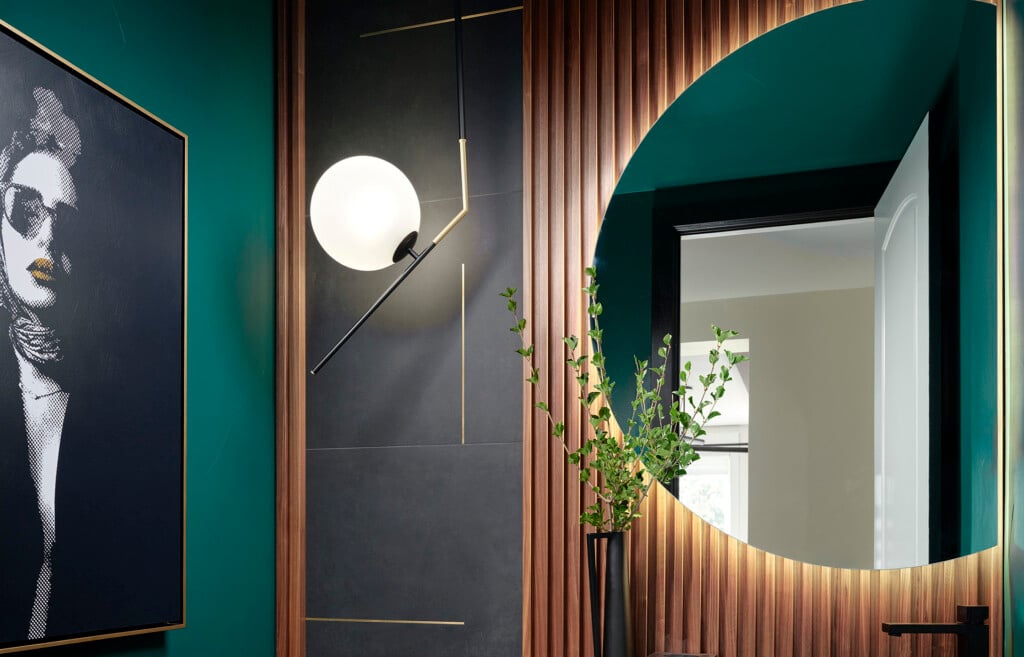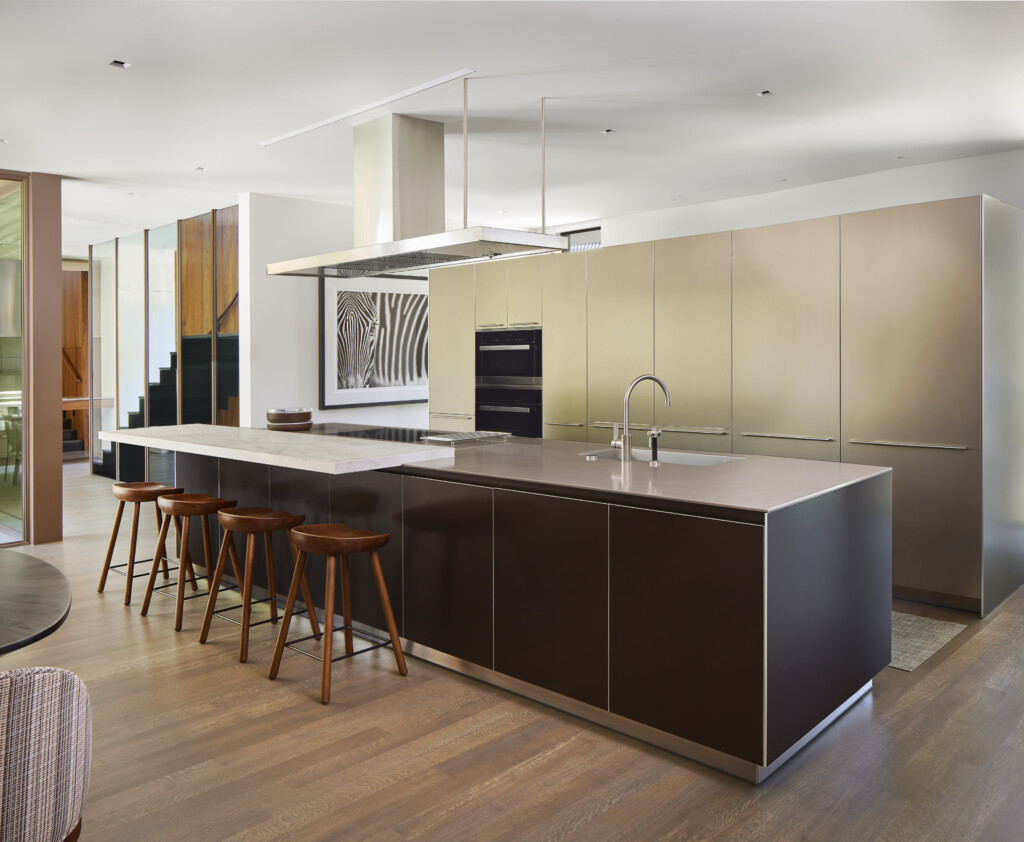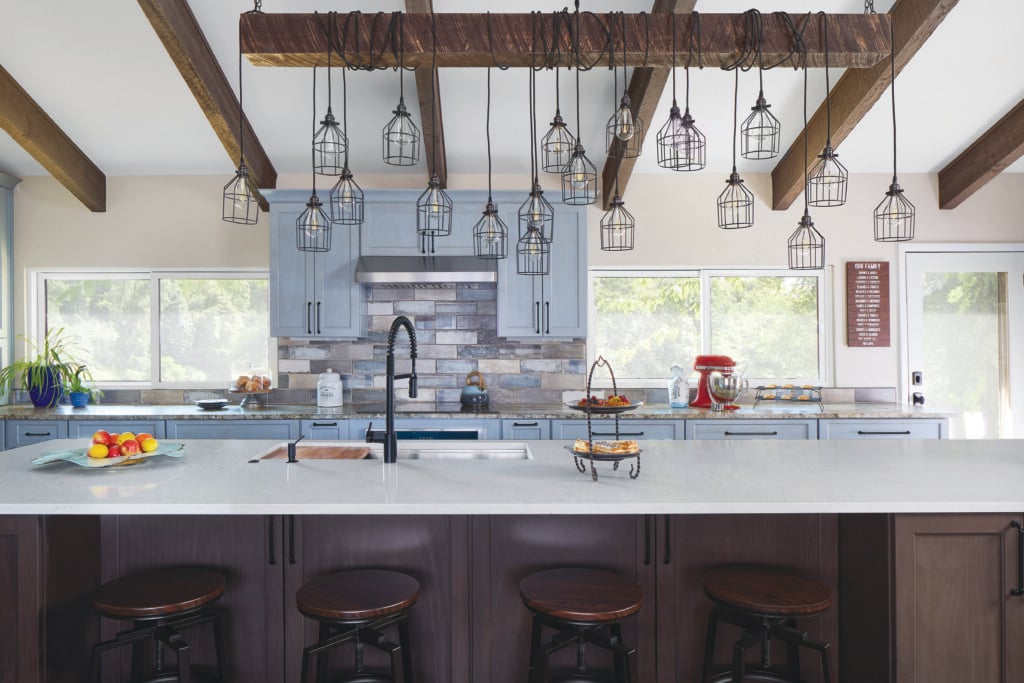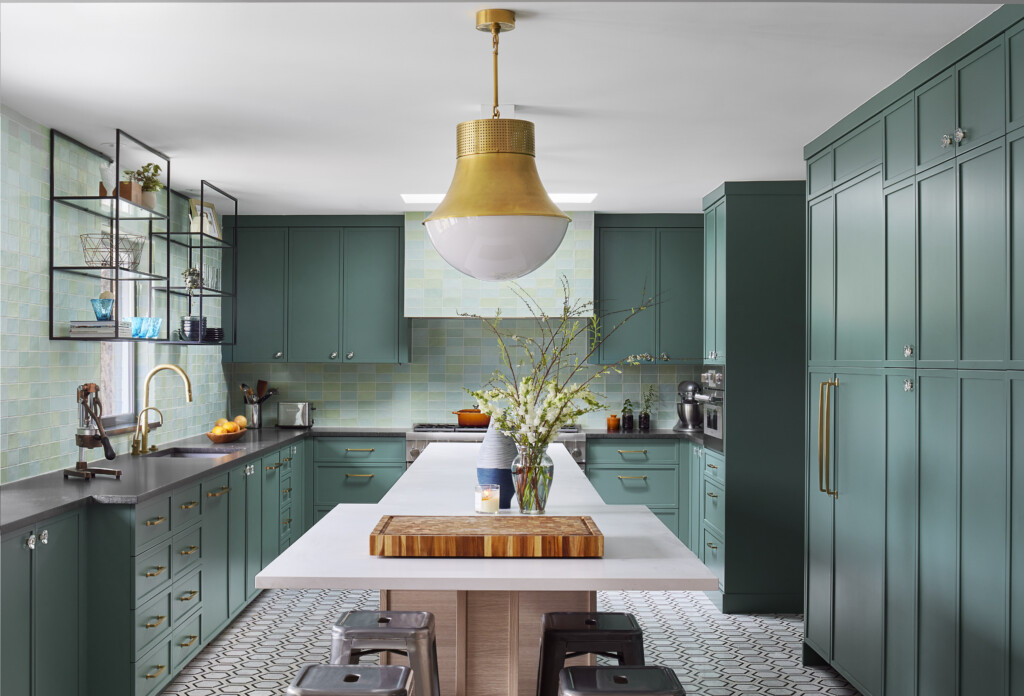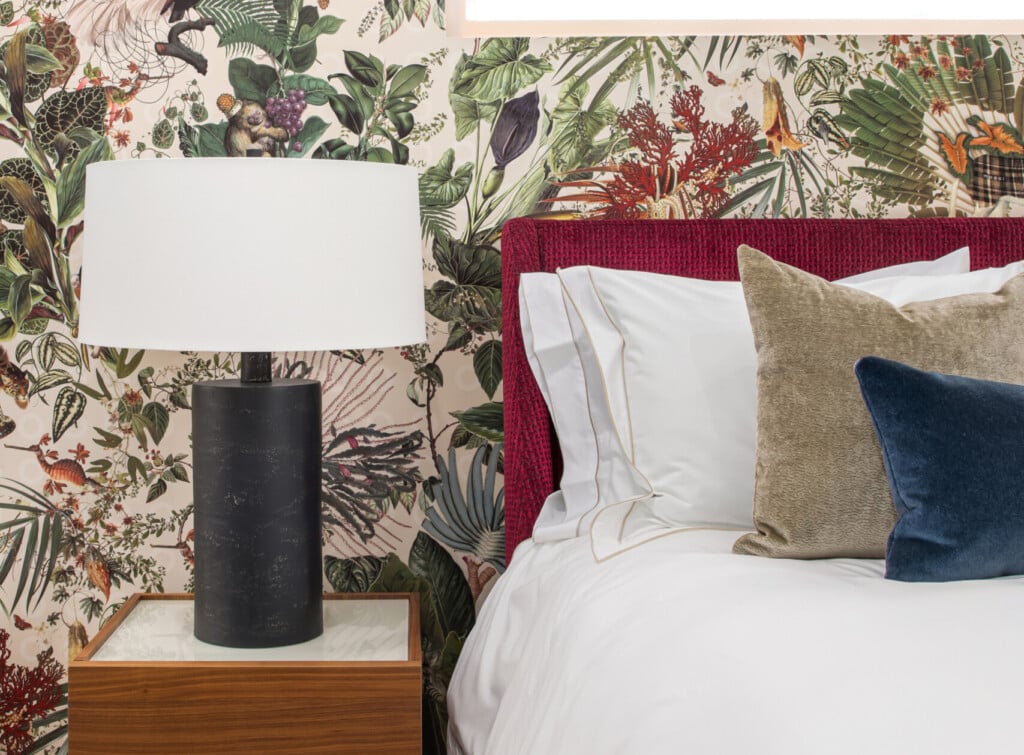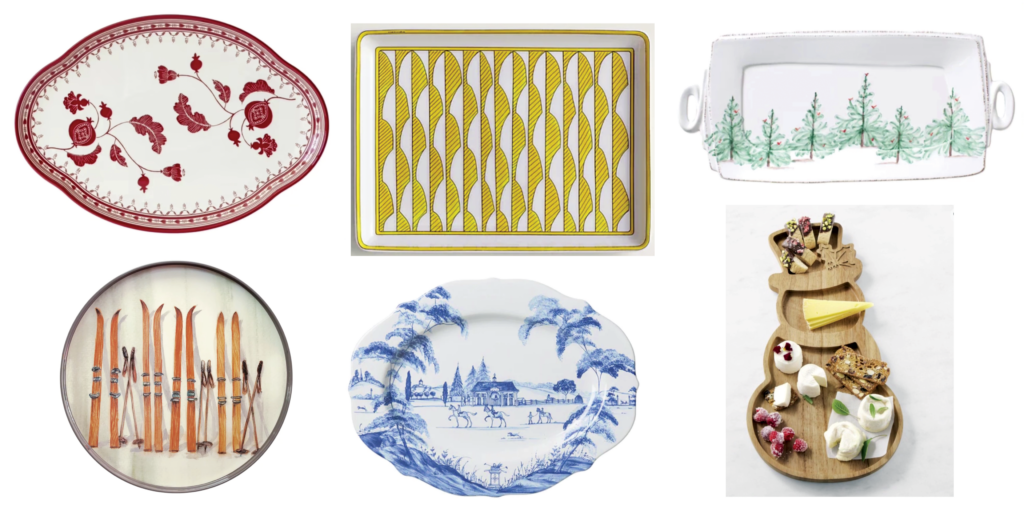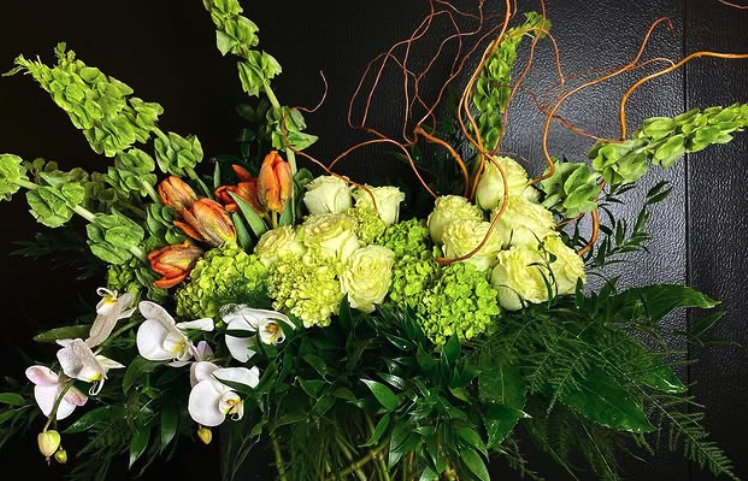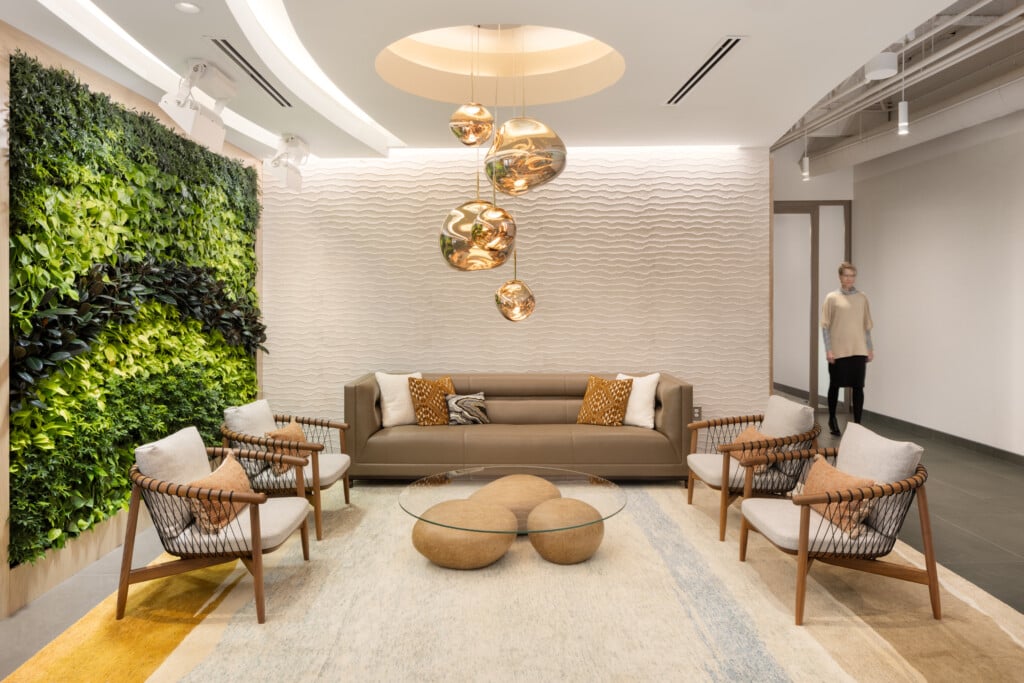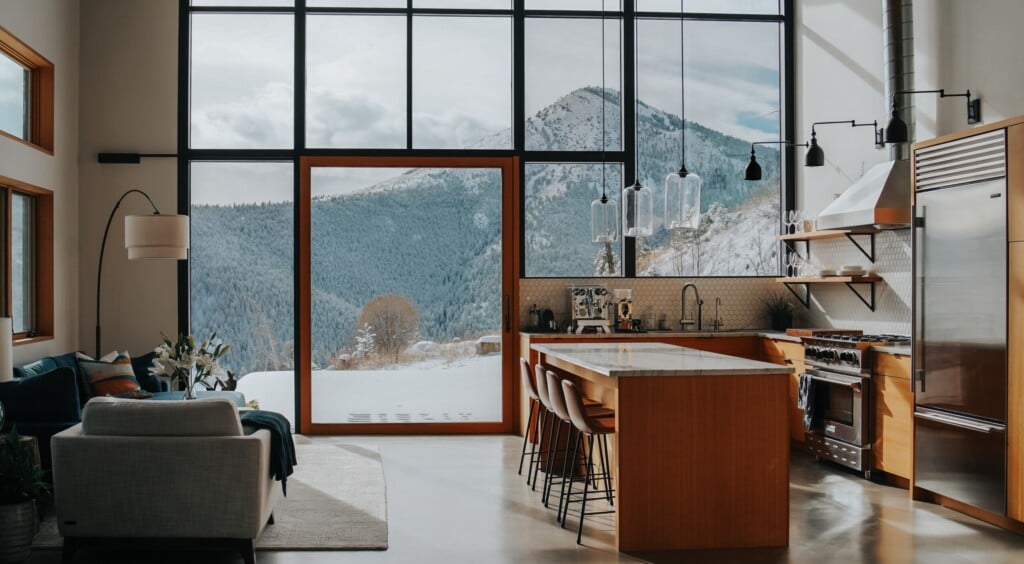The Evolution of Modern Pantry Design
Today's designs take their cues from pantries of the past
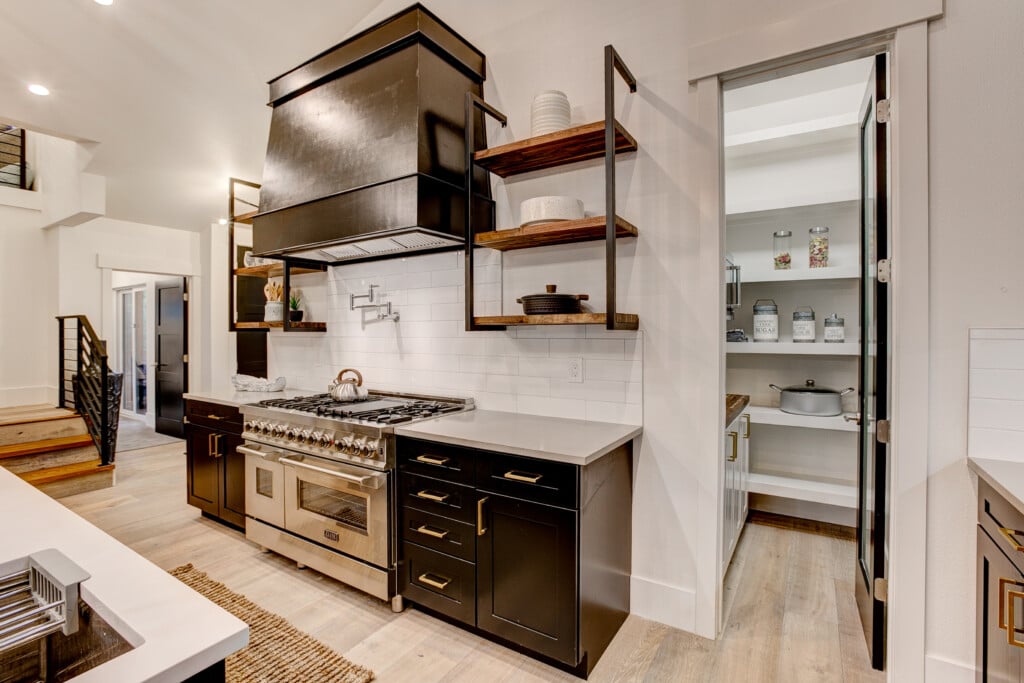
A well-organized storage system in a kitchen can vastly improve the function of your space. Pantries of all kinds have been implemented in homes throughout history to create a food preparation and storage system that best supports homeowners. What can we learn from the pantry designs of the past, and how can we use that to inform modern-day designs?
The Butler’s Pantry
The Butler’s pantry was most common in the late 19th century. It was a separate room located between the kitchen and dining room that was used to store valuable glassware and dishes, and be used for meal and serving preparation.
With today’s access to specialty appliances and bulk goods, this design has made a resurgence in modern-day kitchens and is highly desired by homeowners. Today’s butler’s pantry is typically a walk-in space connected to the kitchen that provides overflow storage, and a hidden area to store a multitude of countertop appliances away from the main kitchen.
Innovative casework design incorporates sliding pocket doors that conceal appliances, offering hidden storage and allowing for easy access without the need to move appliances in and out of their spaces. It is also common that the butler’s pantry is personalized with a coffee bar, wine storage, baking station, or other specific space to tailor to the interests of the homeowner. For the avid chef, this design is ideal for the extra space and the added bonus of keeping everything hidden from the plain site.
Cabinets and Furniture Storage Systems
Storage systems go back as far as we can imagine, in the late 1800’s the first Hoosier cabinets were built and sold. The Hoosier cabinet, founded by Sellers, is a freestanding piece of furniture with storage capabilities and a built-in work surface. Designed for efficiency, they were meant to make food preparation faster by keeping everything you need in one place. In the 1950’s the item known as the bar cart became a popular household furniture piece stemming from the 1800’s popular tea cart.
Today these historical furniture items can be used as inspiration for creating work/storage stations throughout the kitchen that maximize function and streamline storage solutions. Imagine a coffee bar with a dedicated cabinet for storing bags and foils, along with prep stations conveniently situated above a pull-out trash bin.
Built-In Cabinetry
By the mid-20th century, food storage morphed into floor to ceiling cabinets to achieve a more modern design that was integrated in the kitchen. If you live in a mid-20th century home, it is likely that you don’t have enough area for a designated walk-in pantry since they were often not prioritized during this time with the developments of better food refrigeration systems.
This is a common storage solution for modern-day homes and renovations alike. Floor-to-ceiling cabinets maximize storage while taking up the least amount of area in your home. There is no need for a separate space that isn’t always available, and it keeps your food and extra items within the kitchen where they are easy to grab.
Pantry Closets
As home design and functionality have evolved over the decades, the need for storage remains constant. With rising home prices, many homes have downsized, making creatively designed pantry storage more essential than ever. This can range from a simple closet with shelving to a walk-in layout if space permits. When space is limited, a pantry closet offers an excellent storage solution that can often be easily incorporated into existing areas. A pantry closet doesn’t have to be dull; thoughtful casework design can introduce hidden storage and innovative organization ideas while maintaining style and functionality.
Marri Wood, NCIDQ, is a Designer/Project Manager and Aspen Zabel, NCIDQ, is Interior Department Director at award-winning architecture firm VFLA, located in Fort Collins, Colorado. View VFLA’s profile or contact them at 970.224.1191 or www.vfla.com.
Content for this article provided by VFLA.






